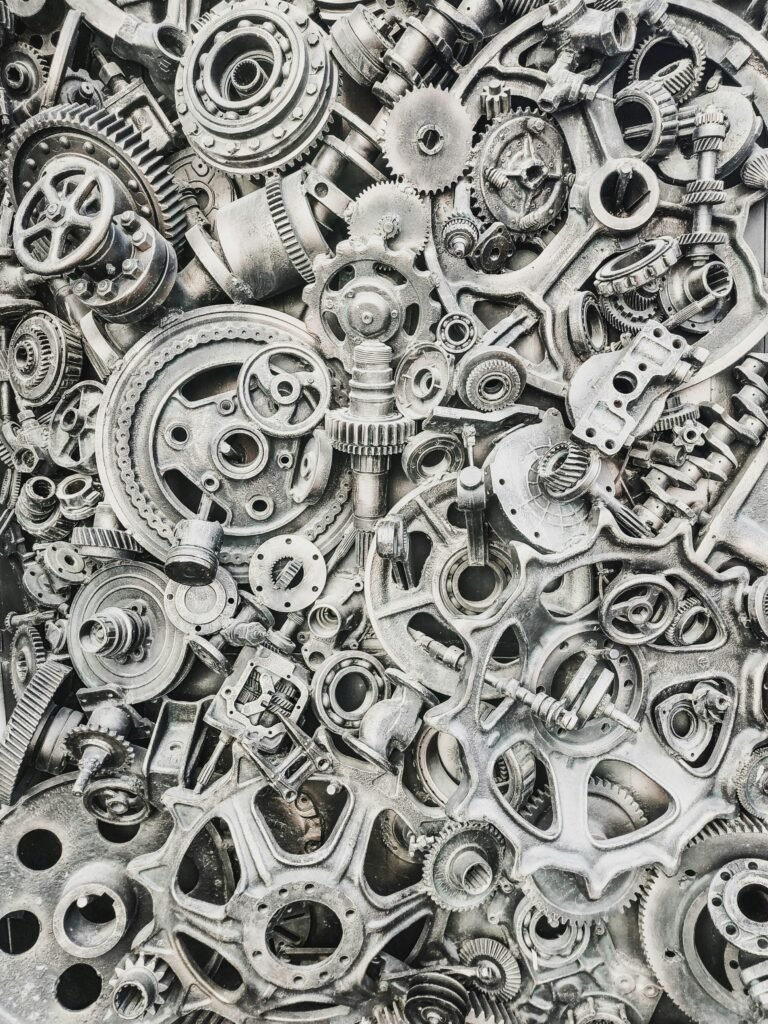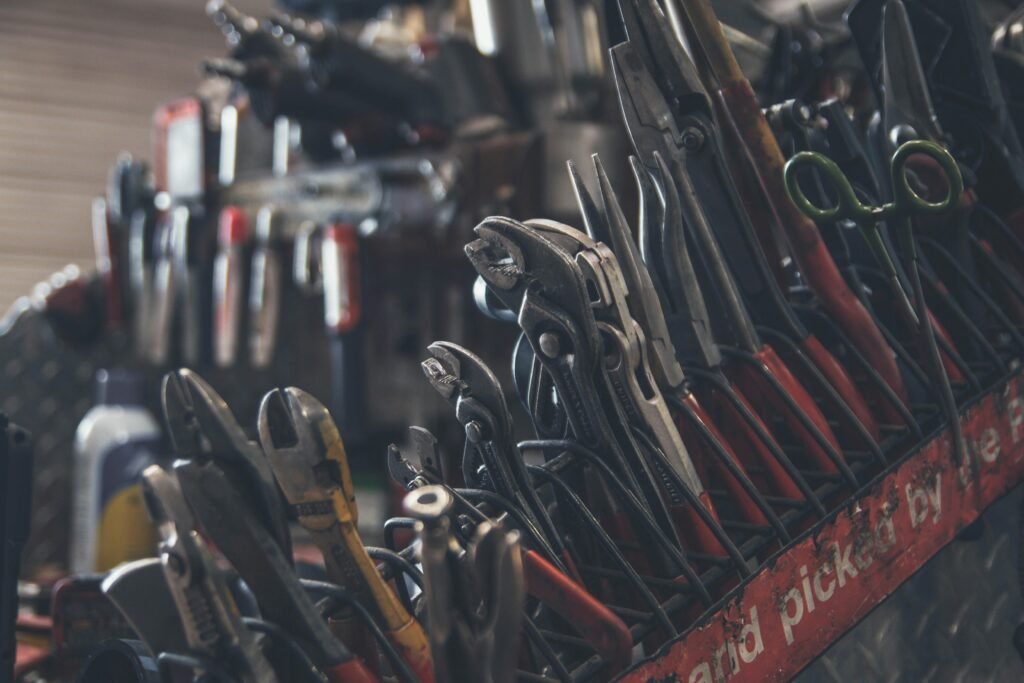In “Clockwork Mechanics: A Comprehensive Guide,” you will find a wealth of information and tips on the intricate art of clockwork mechanics. Whether you’re a budding enthusiast or a seasoned expert, this guide is designed to provide a clear and concise overview of the fundamental principles and techniques involved in this fascinating craft. From understanding the intricate inner workings of clocks to mastering essential maintenance and repair skills, this comprehensive guide is an invaluable resource for anyone looking to delve into the world of clockwork mechanics.
Introduction to Clockwork Mechanics
Clockwork mechanics is a fascinating field that encompasses the intricate art and science of timekeeping. From ancient sundials to modern digital watches, the mechanisms that power these devices have evolved over centuries. In this comprehensive guide, we will delve into the basic principles, delve into the history, and explore the importance of clockwork mechanics.

This image is property of images.unsplash.com.
Basic Principles of Clockwork
At the heart of clockwork mechanics lies the ingenious use of gears and springs to measure and regulate time. Gears and cogs are fundamental components that transmit motion and power throughout the mechanism. Springs, such as mainsprings or hair springs, store and release energy, providing the necessary force to keep the clock running. Escapements, another critical element, help regulate the release of stored energy, ensuring precise timekeeping.
History of Clockwork Mechanics
The history of clockwork mechanics is deeply rooted in ancient civilizations. Ancient Egyptians and Greeks made significant contributions to the development of timekeeping devices. However, it was not until the 14th century, during the Renaissance period, that mechanical clocks as we know them today began to emerge. These early clockmakers laid the foundation for the advancements seen in clockwork mechanics over the centuries.
Importance of Clockwork Mechanics
Clockwork mechanics plays a vital role in our lives, serving as the backbone of timekeeping devices that are essential for personal and societal organization. From day-to-day activities to scientific research, accurate timekeeping is crucial. Clockwork mechanics also holds cultural importance, as clocks have been a symbol of status, craftsmanship, and artistic expression throughout history.
Tools and Equipment
Essential Tools for Clockwork Repair
To undertake clockwork repair, you will need a set of essential tools. These tools include screwdrivers, pliers, tweezers, and magnifying glasses. Screwdrivers of various sizes are necessary for removing and assembling components. Pliers and tweezers come in handy for maneuvering delicate parts. Magnifying glasses aid in detailed inspection. It is essential to invest in high-quality tools to ensure precision and minimize damage to the delicate clockwork components.
Advanced Equipment for Clockwork Restoration
Clockwork restoration often requires the use of advanced equipment. Ultrasonic cleaning machines are invaluable for removing dirt and grime from intricate components. Watchmaking lathes allow for precise machining and fabrication of replacement parts. Calipers and micrometers come in handy for accurate measurements. Advanced equipment not only enhances the restoration process but also enables intricate repairs that would otherwise be challenging to accomplish by hand.
Safety Gear for Clockwork Handling
When working with clockwork, it is essential to prioritize safety. Safety goggles and gloves protect your eyes and hands from potential injury. Some clockwork components, such as springs, can have significant tension and may cause injury if mishandled. Additionally, a clean and well-ventilated workspace is crucial to minimize the risk of inhaling dust or chemicals during the repair or restoration process.
Mechanical Components
Gears and Cogs
Gears and cogs are the backbone of any clockwork mechanism. These finely crafted components mesh together, transmitting power and regulating motion. Various types of gears, such as spur, bevel, and worm gears, serve specific functions in clockwork mechanics. The number of teeth on a gear determines its speed, while the arrangement of gears determines the overall gear ratio, affecting the movement of the clock hands.
Springs and Escapements
Springs play a pivotal role in clockwork by storing and releasing energy. Mainsprings provide the primary power source, while hair springs regulate the oscillation of the balance wheel or pendulum. Escapements control the release of energy from the spring, allowing for precise timekeeping by controlling the rate at which the gears move. The escapement’s design and function vary depending on the type of clock, whether it be a pendulum or balance wheel system.

This image is property of images.unsplash.com.
Pendulums and Balance Wheels
Pendulums and balance wheels are critical components in clockwork mechanisms. A pendulum consists of a rod and a weight (bob) and swings back and forth with a fixed period. The regular motion of the pendulum serves as a timekeeping element in clocks. Balance wheels, on the other hand, are circular rotating wheels fitted with spiral springs, regulating the timekeeping in timepieces such as watches. Both pendulums and balance wheels ensure the regular oscillation required for accurate timekeeping.
Repairing and Maintaining Clockwork
Identifying Common Clockwork Issues
Clockwork mechanisms, like any mechanical device, can experience issues over time. Common problems include gears slipping, springs losing tension, or escapements failing to release energy properly. Identifying these issues is crucial to rectify them effectively. By examining the movement, listening for irregular sounds, or observing inconsistencies in timekeeping, you can pinpoint the problem areas that require repair or maintenance.
Troubleshooting and Diagnosis
Once you have identified the issues, troubleshooting and diagnosis come into play. This involves a systematic approach to assess the components, their condition, and potential causes of malfunction. It may require disassembling the clockwork, inspecting each individual part, and testing functionalities. Careful examination and knowledge of clockwork mechanisms are vital in order to diagnose problems accurately.
Cleaning and Lubrication Techniques
Cleaning and lubrication are key aspects of clockwork maintenance. Over time, dirt and dust accumulate within the mechanism, hindering its proper functioning. Cleaning involves using specialized solvents and brushes to remove debris without damaging the delicate components. Lubrication ensures the smooth movement of gears by applying oil or grease to the necessary parts. However, it is essential to use the correct type and amount of lubricant, as excessive lubrication can lead to issues as well.
Restoring Antique Clockwork
Researching and Authenticating Antique Clocks
Restoring antique clockwork requires thorough research and authentication. Understanding the specific era, style, and manufacturer of the clock can help in sourcing accurate replacement parts and maintaining its historical value. Examining the clock’s markings, inscriptions, and internal mechanisms can provide valuable clues about its authenticity and age. Consulting experts or reference books on the subject is highly recommended to gather accurate information.
Replacing Missing or Damaged Parts
Restoring antique clockwork often involves replacing missing or damaged parts. It is crucial to source these parts from reputable suppliers specializing in antique clock components. Matching the original design, materials, and craftsmanship ensures the restoration stays true to the clock’s originality. Careful installation and adjustment are necessary to maintain the integrity and functionality of the restored clockwork mechanism.
Preserving Original Aesthetics
Preserving the original aesthetics of antique clockwork is essential to honor its historical and artistic value. Restorers should take great care in maintaining the original finishes, whether it be gilding, patination, or decorative elements. Using appropriate restoration techniques, such as gentle cleaning and minimal touch-ups, helps retain the character and beauty of the clock. Preserving the original aesthetics not only enhances its value but also allows future generations to appreciate its craftsmanship.
Clockwork Automation and Complications
Automata and Mechanical Toys
Clockwork automation led to the creation of whimsical mechanical toys and automata. Automata are intricate, self-operating machines that mimic human or animal movements. From singing birds to dancing figures, clockwork-powered automata brought joy and entertainment to both children and adults. The mechanisms behind these creations often involved complex gears, levers, and cams, showcasing the wonders of clockwork mechanics.

This image is property of images.unsplash.com.
Musical Clockwork Movements
Clockwork has long been associated with producing beautiful music. Musical clockwork movements incorporate small pipes or bells that produce melodious tunes or chimes at specific intervals. The intricate mechanisms involved in these musical clockworks require precise engineering and tuning. From grand hall clocks to intricate pocket watches, the musical aspect added a touch of elegance and sophistication to the timekeeping experience.
Astrological and Calendar Complications
Clockwork mechanisms have been utilized to display astrological and calendar complications. Astrological complications involve the representation of celestial bodies, such as the moon phase or planetary alignments. Calendar complications, on the other hand, track and display various calendrical information, including date and month. These intricate complications often involved additional gears, dials, and indicators, showcasing not only the artistry but also the practical functions of clockwork mechanics.
Clockwork in Modern Technology
Clockwork in Automobiles and Engines
While modern technology has largely shifted to electronic and digital systems, clockwork still finds its place in certain applications. In vintage automobiles, clockwork mechanisms were commonly used in dashboard clocks, providing accurate timekeeping without relying on electrical systems. Clockwork mechanisms are also found in engines, where they regulate and synchronize various mechanical processes, ensuring optimal performance.
Clockwork in Cameras and Projectors
Clockwork mechanisms have had a significant impact on the early development of cameras and projectors. In film cameras, clockwork motors advanced the art of cinematography by providing a consistent and precise film transport mechanism. Similarly, clockwork projectors allowed for the smooth projection of moving images onto screens. Clockwork played a crucial role in the birth of motion pictures, revolutionizing the way we capture and display visual media.
Advancements in Precision Timekeeping
Clockwork mechanics continue to play a vital role in precision timekeeping. Despite the advent of electronic and atomic clocks, mechanical timepieces still captivate enthusiasts with their craftsmanship and precision. Innovations such as tourbillons, which counteract the effects of gravity on the accuracy of watches, highlight the ongoing advancements in mechanical watchmaking. Clockwork remains an integral part of our pursuit of precise timekeeping.
Clockwork Artistry
Engraving and Embellishment Techniques
Clockwork mechanisms provide a canvas for artistic expression through engraving and embellishment. Skilled artisans meticulously carve intricate patterns and designs onto the metal surfaces of clockwork components. These engravings serve both practical and aesthetic purposes, enhancing the beauty of the timepiece while showcasing the craftsmanship of the artist. Embellishments such as gemstones or decorative motifs further elevate the artistic value of clockwork.
Clockwork Sculptures and Installations
Clockwork can transcend mere functional timekeeping and become a work of art in itself. Clockwork sculptures and installations push the boundaries of creativity and engineering. Large-scale installations, like kinetic sculptures and elaborate clock towers, mesmerize viewers with their intricate movements and artistic storytelling. Clockwork mechanisms form the foundation of these captivating artworks, merging mechanics and aesthetics into a harmonious whole.
Unique Clockwork Designs
Clockwork mechanics have inspired countless unique and innovative designs. From whimsical and novelty pieces to avant-garde creations, clockwork provides a platform for imaginative interpretations. Unconventional mechanisms, novel materials, and unconventional layouts challenge traditional notions of timekeeping. Clockwork designs continuously push boundaries, showcasing the versatility and creativity that can be achieved within this fascinating field.
Clockwork Collections and Museums
Prominent Clockwork Collections
Clockwork enthusiasts and collectors have amassed renowned collections of historical and significant timepieces. The intricate craftsmanship and historical value of these clocks make them highly sought-after. Prominent clockwork collections, such as those housed in museums and private collections, showcase a diverse range of styles, mechanisms, and eras. These collections provide valuable insights into the evolution of clockwork mechanics and serve as a testament to human ingenuity.
Museums Dedicated to Clockwork Mechanics
Numerous museums around the world are dedicated to preserving and showcasing the artistry and history of clockwork mechanics. These museums often display a wide range of timepieces, from ancient sundials and early mechanical clocks to modern precision watches. Visitors can explore the intricate mechanisms, learn about the history and cultural significance of clockwork, and appreciate the artistry behind these timekeeping devices.
Guidelines for Starting Your Own Collection
If you are captivated by the art and science of clockwork mechanics, starting your own collection can be a rewarding endeavor. Begin by researching different styles, periods, and manufacturers to understand your preferences and interests. Attend auctions, antique fairs, and consult with reputable dealers to source quality pieces. Remember to set a budget and prioritize the condition, authenticity, and provenance of the clocks you acquire. Joining horology societies or attending clockwork exhibitions can also provide valuable insights and connections within the community.
Exploring Clockwork in Literature and Film
Famous Clockwork Themes in Literature
Clockwork mechanics have captivated the literary world, often serving as metaphors or symbols for various themes. Novels such as “The Time Machine” by H.G. Wells and “Clockwork Orange” by Anthony Burgess explore the concepts of time, control, and societal order. Clockwork mechanisms are often employed as literary devices, representing the mechanical nature of existence or the manipulation of human behavior. These themes add depth and philosophical intrigue to the narratives.
Clockwork Mechanics in Movies and TV Shows
Clockwork mechanics have made their way onto the silver screen, bringing the intricate mechanisms to life. Films such as “Hugo” and “Chitty Chitty Bang Bang” showcase intricate clockwork contraptions, enchanting audiences with their whimsy and wonder. TV shows like “Doctor Who” use clockwork robots and time-traveling devices, incorporating clockwork imagery into the storyline. Clockwork mechanics in the visual medium provide a captivating visual spectacle and add a touch of magic to the narrative.
Clockwork as a Symbolic Element in Art
Clockwork mechanics have long been used as symbolic elements in various art forms. Artists employ the imagery of clockwork to evoke ideas of time, order, or the passage of life. Paintings, sculptures, and installations incorporating clockwork motifs provide thought-provoking commentary on the nature of existence, the balance between man and machine, or the fleeting nature of time itself. Clockwork symbolism in art adds layers of meaning and invites viewers to contemplate the complexities of the human experience.
In conclusion, clockwork mechanics encompasses a rich history, profound importance, and diverse applications. From the basic principles of gears and springs to the intricacies of automata and musical clockwork movements, clockwork mechanics continue to captivate and inspire. Whether restoring antique clocks, exploring clockwork’s role in modern technology, or delving into the artistry and symbolism of this fascinating field, there is much to discover and appreciate in the world of clockwork mechanics.
